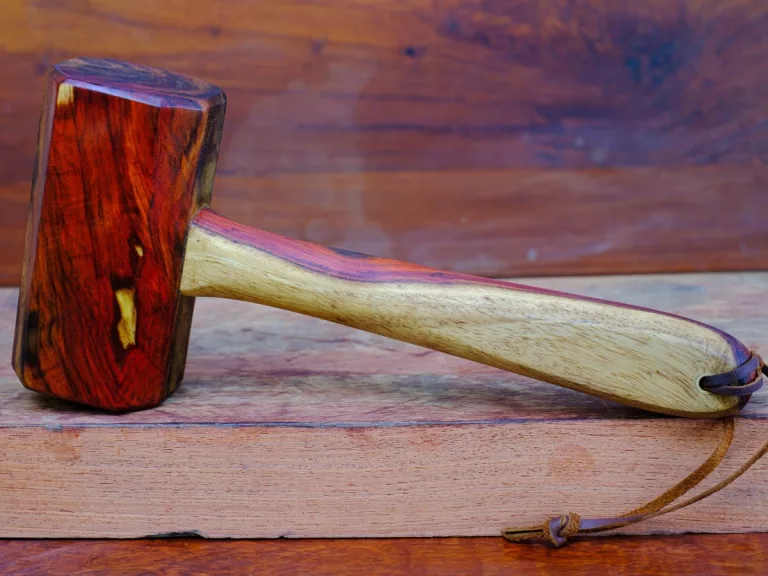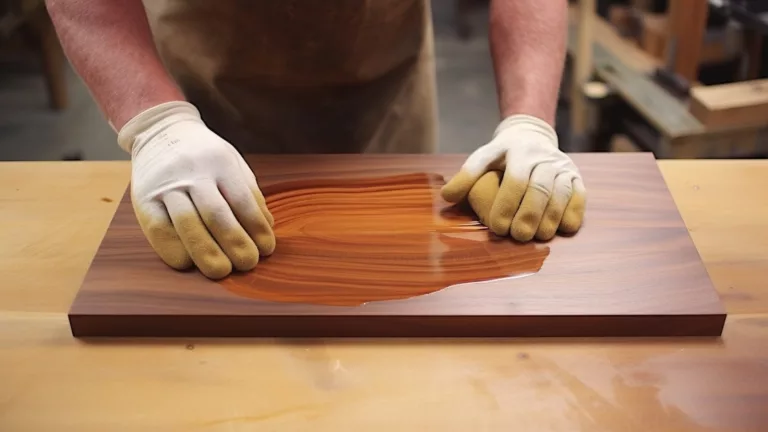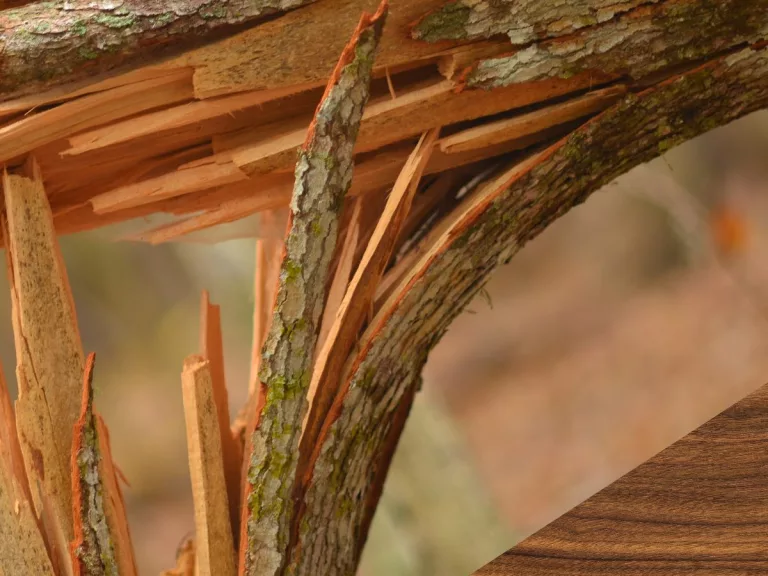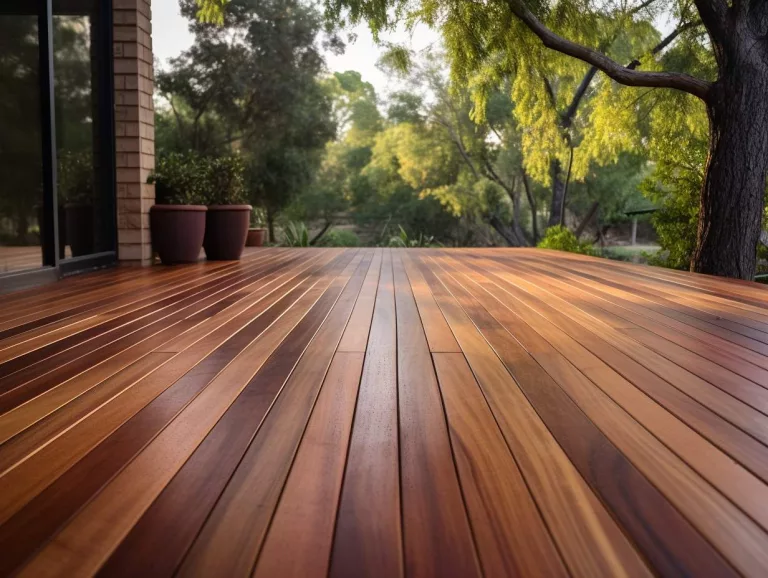Properties of Petrified Wood, A Natural Wonder
Petrified wood is a fascinating subject of study, bridging the realms of botany and geology. The transformation from organic material to a stone-like substance unveils a wealth of information about Earth’s history. As a wood specialist, delving into the petrified world opens doors to the ancient flora, shedding light on our planet’s geological processes.
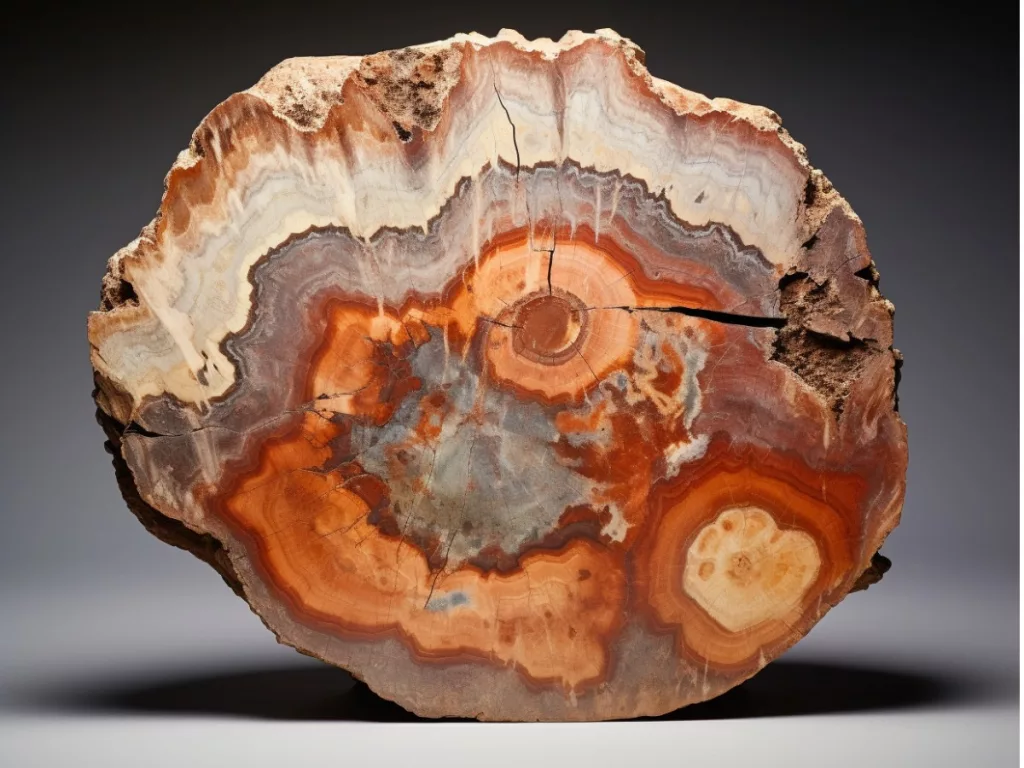
Formation and Geological Process: Basic Properties of Petrified Wood
Petrified wood, colloquially referred to as petrified tree (deriving from the Ancient Greek πέτρα which translates to ‘rock’ or ‘stone’; essentially signifying ‘wood transformed into stone’), is a term designated to a unique variety of fossilized wood, encapsulating the fossilized vestiges of terrestrial vegetation.
Burial and Initial Preservation
The journey of wood from a living organism to a fossilized specimen commences with its burial, a process pivotal in preserving the organic material from decay.
Role of Natural Disasters
The wrath of natural calamities like volcanic eruptions and floods often facilitates rapid burial of trees. For instance, the eruption of Mount St. Helens in 1980 provided a modern-day observation of how such cataclysmic events can contribute to the burial of organic matter. As a wood specialist, observing the aftermath revealed the magnitude of natural forces in setting the stage for potential petrification.
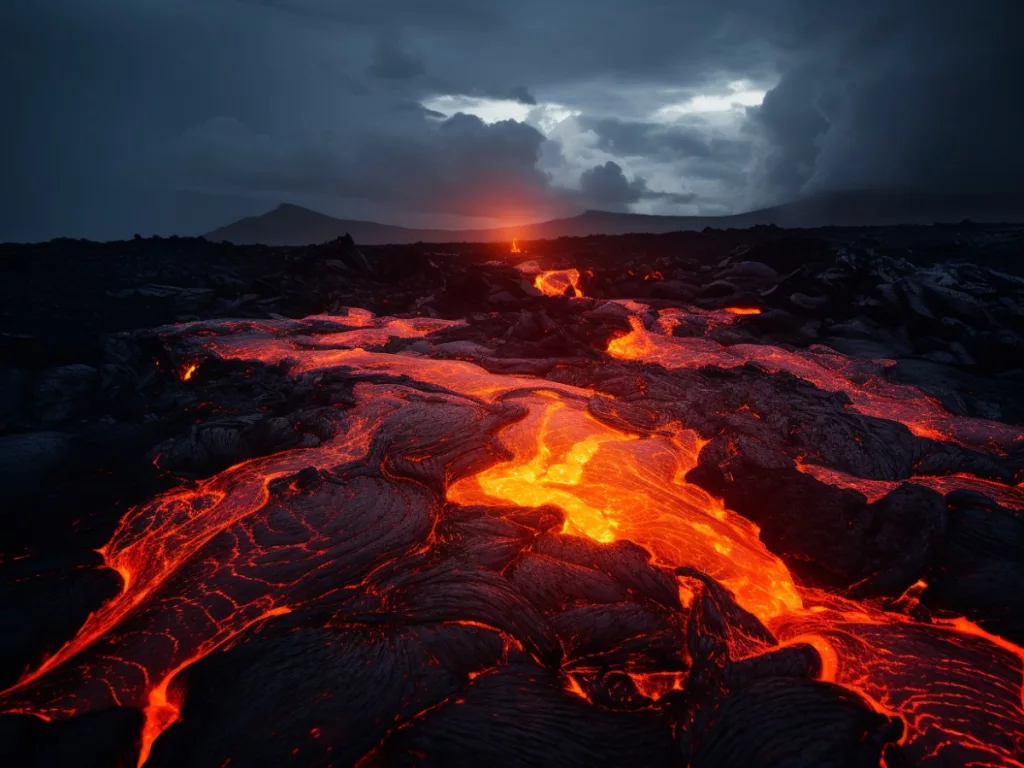
Sediment Types and Preservation
Fine-grained sediments like volcanic ash and alluvial silt provide a conducive environment for the preservation of buried wood. Their finer particles envelop the wood more thoroughly, forming a barrier against decay-inducing microorganisms. My examination of petrified samples from different locales reflected a correlation between sediment types and the degree of preservation, a premise supported by numerous geological studies.

Mineralization: Transition to Stone
Mineralization is the core process that embarks the transmutation from organic to inorganic, encapsulating a tale of geological history within. This is the most amazing natural engineering properties of petrified wood.
Permineralization Process
Mineral Infiltration
As groundwater laden with minerals permeates the buried wood, it initiates the process of permineralization. The rate of mineral infiltration is significantly influenced by the porosity of the wood and the mineral concentration in the groundwater. My experiments with different wood samples under simulated conditions unveiled a range of petrification rates, underscoring the complexity of the process.
Cellular Replacement
Over extended periods, the organic cellular structures gradually give way to minerals, culminating in a stone replica of the original material. Delving into the microscopic realm, the precision of cellular replacement is indeed captivating, a fine display of nature’s meticulous craftsmanship.
Types of Minerals Involved
Silica
Predominantly, silica, often in the form of quartz, is the principal actor in the petrification process. Its abundance in nature and the inherent ability to form crystalline structures make it a common constituent in petrified wood. A survey of petrified wood samples from various geological formations reaffirmed silica’s predominant role, echoing findings from multiple geological surveys.
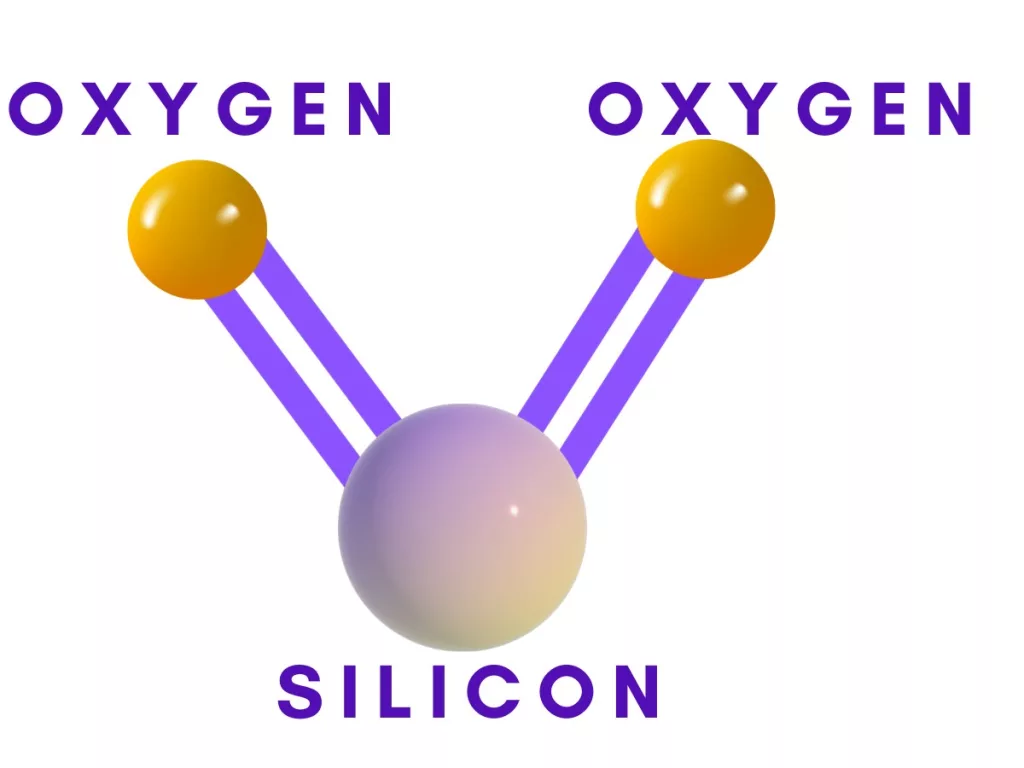
Other Minerals (Pyrite, Calcite)
Apart from silica, minerals like pyrite and calcite also partake in the petrification process, each lending unique hues and characteristics to the petrified specimens. My exploration into the Petrified Forest in Arizona revealed a palette of colors, a testament to the mineral diversity encapsulated over ages. Such mineralogical diversity not only augments the aesthetic appeal but also furnishes vital clues to the geological history of the region.
The study of petrified wood is akin to unfolding a geological manuscript, each mineralized cell narrating a saga of Earth’s bygone eras. Through the lens of a wood specialist, this voyage extends beyond mere academic curiosity, unraveling a tangible connection between the realms of botany and geology, fostering a deeper appreciation for the enduring beauty and scientific relevance of petrified wood.
Popular Gem Stone Formation
While not technically classified as gemstones, pieces of petrified wood are sometimes cut, polished, and treated in a similar manner to gemstones for use in jewelry and decorative items. Here are some gemstone-like materials derived from petrified wood:
Agate
Agate is a common mineral (primarily silicon dioxide mixed with minerals) that can replace the organic materials in wood. Petrified wood that contains agate often exhibits beautiful, vibrant colors and patterns.

Quartz
Similarly, quartz is another mineral that can replace the organic material, often creating a shiny, crystalline appearance when polished.
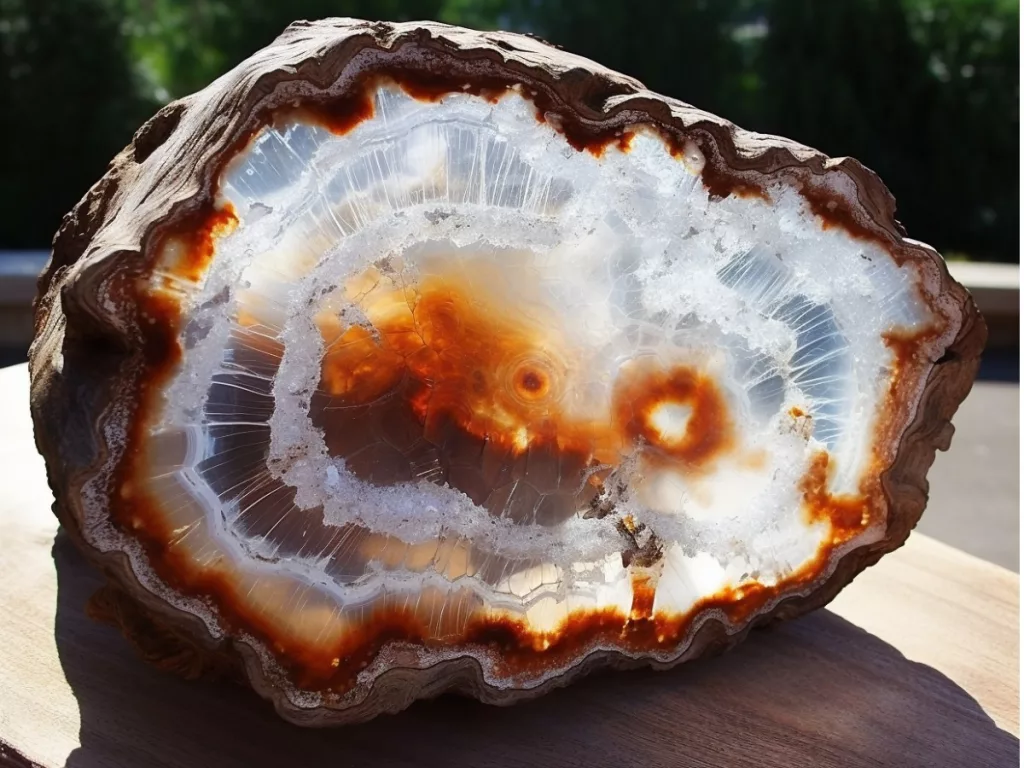
Opalized Wood
Occasionally, the silicification process results in the creation of precious opal in the cellular structure of the wood. Opalized wood is rare and highly valued.

Jasper
Jasper is another mineral that can replace the organic material in wood, often resulting in interesting patterns and colors.
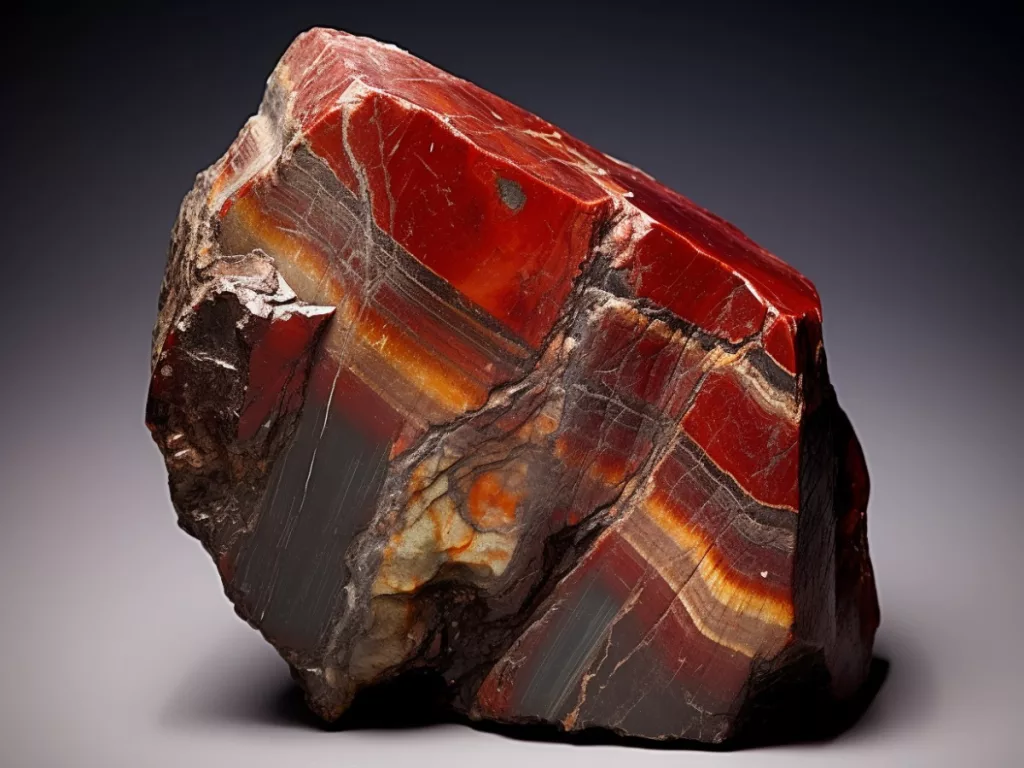
Chalcedony
Chalcedony is a type of quartz that can also replace the organic material in petrified wood, providing a translucent to opaque stone.
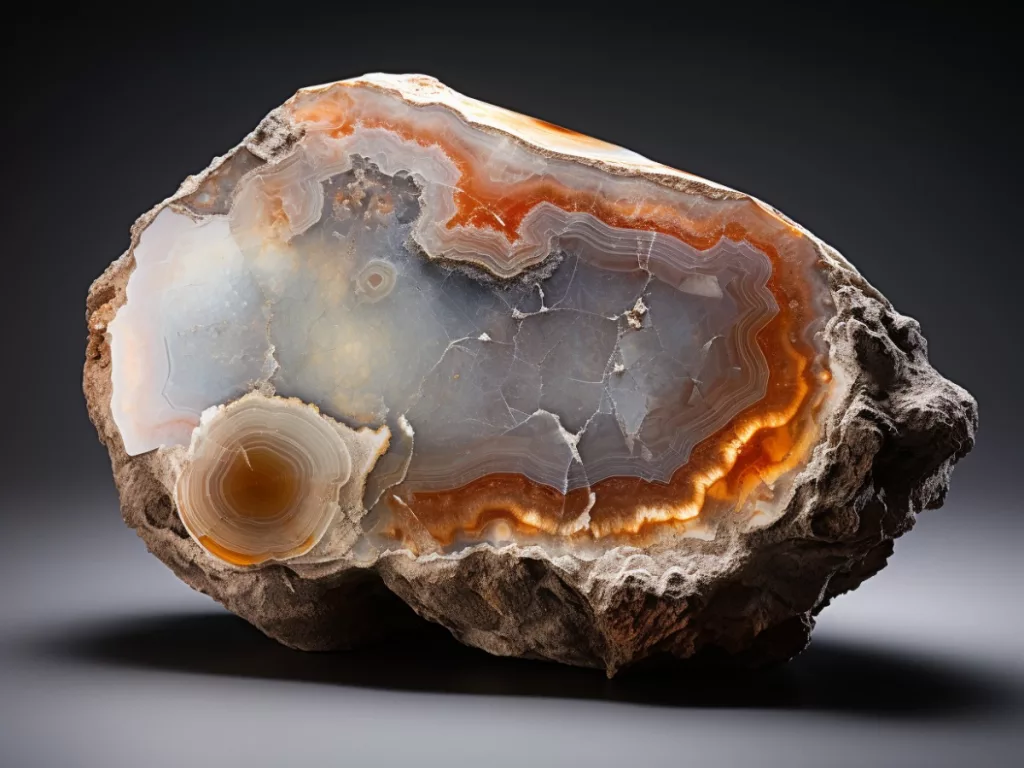
Each type of mineral replacement imparts unique colors and characteristics to the petrified wood, and skilled lapidaries can cut and polish this material to emphasize its beauty, making it comparable to various gemstones in aesthetics and value.
Time Frame of Petrification
Petrification is a marathon of geologic time, not a sprint, with each step in the process deeply entrenched in a plethora of factors.
Factors Affecting Petrification Rate
Rate of Burial
The pace at which organic material is buried is a significant determinant in the petrification process. Rapid burial, often triggered by natural disasters, provides a shield against decay, fostering a conducive environment for mineralization.
Groundwater Movement
The movement of groundwater, replete with minerals, plays a pivotal role. Faster groundwater movement can accelerate mineral infiltration, while stagnant water might hinder the process.
Historical and Geological Context
Radiometric Dating Techniques
Radiometric dating techniques like Carbon-14 and Uranium-Lead dating furnish a window into the age of petrified specimens, providing a temporal framework for the process. These techniques have been instrumental in demarcating the time span of petrification, revealing timelines stretching from a few thousand to several million years.
Geological Periods Represented
Petrified wood serves as a tangible memoir of bygone geological epochs. Each specimen is a time capsule, with its mineral constituents and radiometric signatures narrating tales of Earth’s historic climactic and geological shifts.
Geographic Occurrence of Petrified Wood
The geographic manuscript of petrified wood unveils chapters of ancient Earth, with every location narrating unique tales of geological and botanical evolution.
Notable Locations in the United States
Petrified Forest National Park, Arizona
Home to a vast expanse of petrified wood dating back to the Late Triassic Period, this park is a geological haven. The colorful canvas of petrified logs, predominantly painted by silica, showcases a mesmerizing blend of geology and artistry.
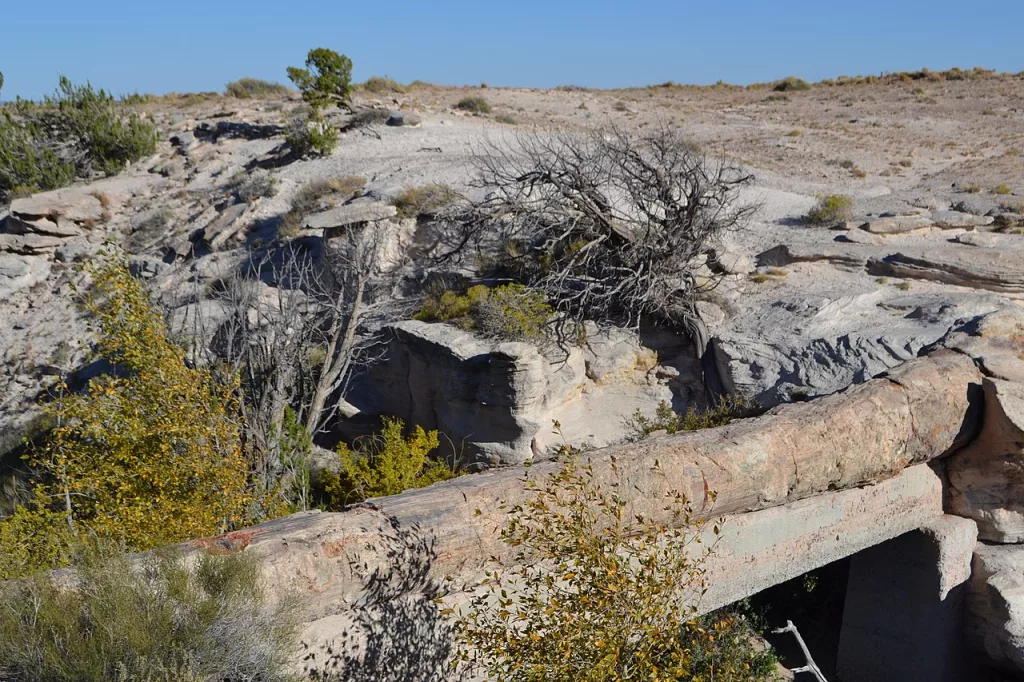
You can watch this video on wood fossils in this national park for a bit more understanding of the nature’s wonder.
Petrified Wood Park, South Dakota
This locale, with its quaint charm, houses an extensive variety of petrified wood specimens. The juxtaposition of the ancient and the new provides a humble reminder of nature’s timeless craftsmanship.
Global Locations of Petrified Wood
Lesvos Petrified Forest, Greece
A magnificent display of petrified remnants from the distant past, the Lesvos Petrified Forest stands as a testament to the awe-inspiring prowess of natural processes over millennia.
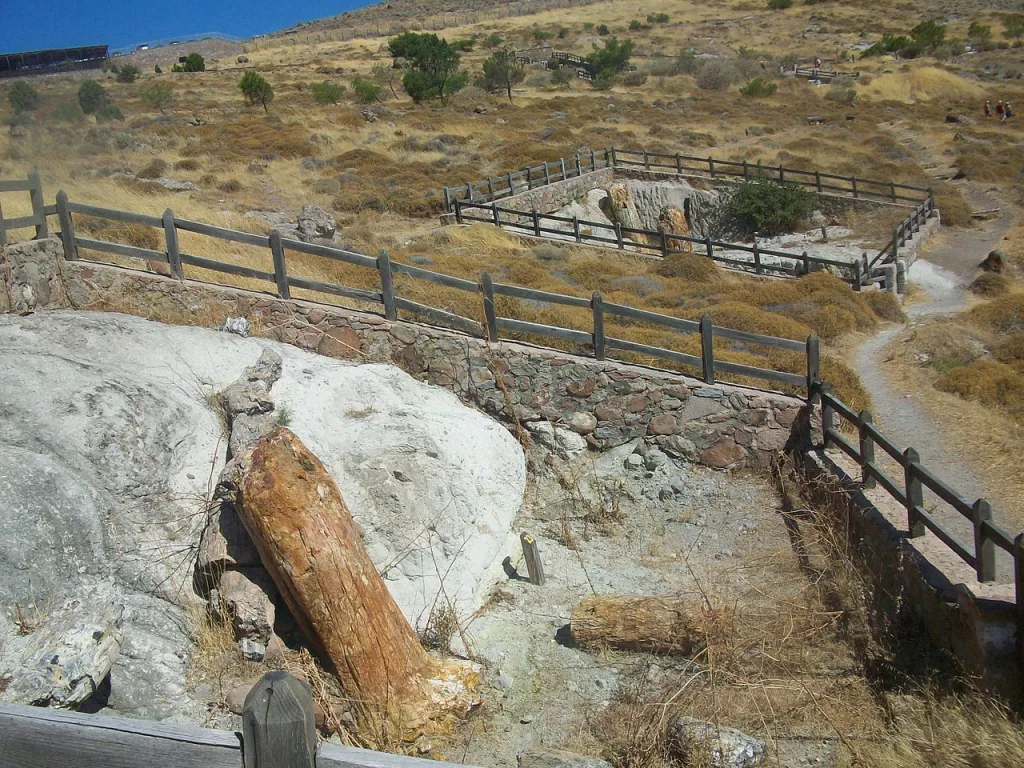
Other International Sites
From the mystic realms of Madagascar’s petrified forests to the ancient fossilized woods of Argentina, each locale adds a unique verse to the global narrative of petrified wood. These sites, with their diverse mineral palette and geological backdrops, contribute to the holistic understanding of petrification across varying geographical and climatic canvases.
The geographic spread of petrified wood narrates a saga that traverses the boundaries of time and space. From the arid landscapes of Arizona to the serene isles of Greece, each granule of petrified wood is a page from Earth’s profound geological anthology, urging the curious minds to delve deeper into the intertwined realms of botany, geology, and history.
Physical and Chemical Characteristics
The transition from wood to stone is not only a tale of time but also an intricate alteration in physical and chemical properties. Diving into the realm of petrified wood, one discovers a fusion of earthly minerals and erstwhile organic essence.
Physical Properties
The physical attributes of petrified wood share a fascinating narrative of endurance and transformation under Earth’s orchestration.
Hardness and Durability
During my excursions as a wood specialist, I have always marveled at the metamorphosis that wood undergoes to achieve a hardness rating akin to some minerals. Its durability can be attributed to the permeation of minerals that fill in the cellular structure, rendering it sturdy enough to withstand the ravages of time.
Appearance and Textural Attributes
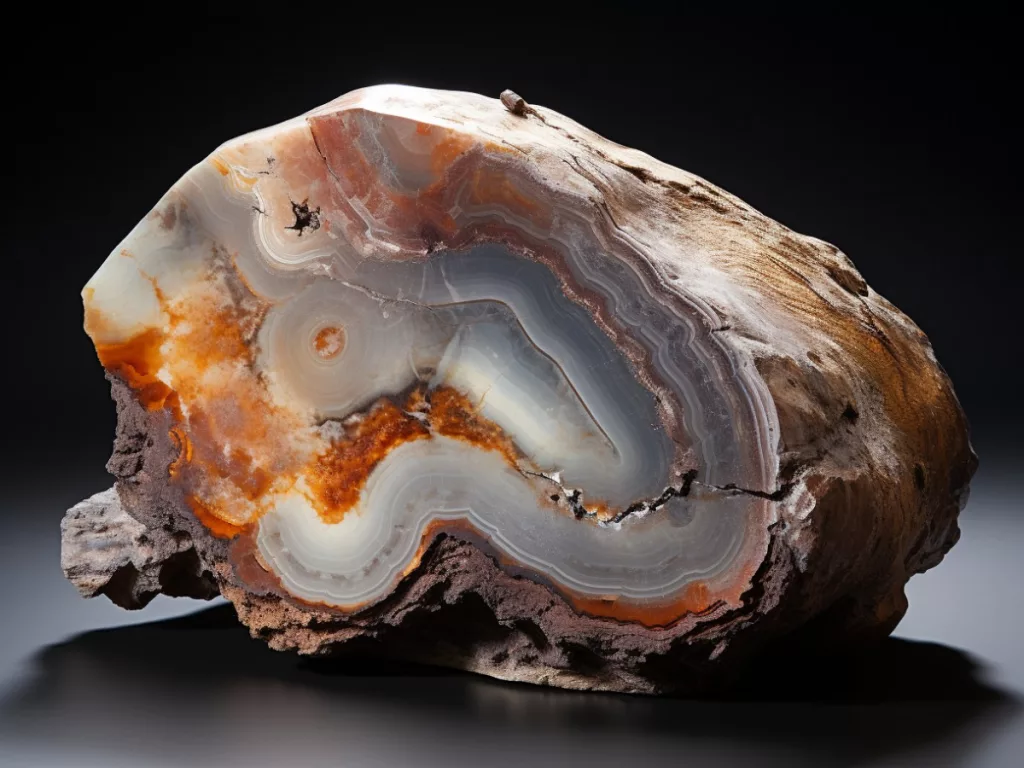
Petrified wood enchants one with its colors and textures that speak volumes of its geological voyage. The fine grain pattern, reminiscent of its wooden past, along with a smooth, often polished surface, holds a rustic charm. The myriad colors, from earthy browns to vibrant reds, are reflective of the minerals that have claimed abode within.
Chemical Composition
Exploring the chemical make-up of petrified wood unveils a tale of mineral encroachment and organic surrender.
Common Minerals
Silica, in the form of quartz, is often the predominant mineral found in petrified wood. It’s an encounter of the crystalline world with organic realms that fascinated me during my examinations.
Mineral Composition Analysis
A detailed analysis can reveal a list of minerals like calcite, pyrite, and even opal. The mineral composition can be deciphered through spectroscopic techniques, shedding light on the geological conditions prevalent during the petrification process.
Variation in Mineral Composition
The mineral composition isn’t a monolith but a diversified portfolio that varies significantly across specimens and regions.
Regional Variation
During my travels, I observed that specimens from Arizona often bore a remarkable silicification (the process of petrification, occurs when fluids abundant in silica infiltrate the cavities of terrestrial substances, such as rocks, wood, bones, and shells, substituting the original materials with silica), while those from regions around volcanic settings showcased a wider mineral variety. The regional variances in mineral composition offer a geologic fingerprint, linking the petrified wood to its terrestrial origins.
The blend of physical and chemical characteristics in petrified wood narrates an evocative tale of life, time, and the enduring legacy of nature’s past endeavors. The exploration into its properties is not merely a scientific pursuit but a journey through the annals of Earth’s vibrant history.
Uses and Applications
Delving into the diverse applications of petrified wood unveils its relevance across aesthetic, educational, and scientific domains. The immutable whispers of history resonating through its stony structure find a place in modern-day decor and academic pursuits.
Architectural and Decorative Uses
The fusion of ancient tales and modern design unfolds gracefully in the architectural and decorative arenas.
Furniture Design
As a wood specialist, crafting furniture from petrified wood has always been an enchanting experience. The hardened texture and variegated color palette of petrified wood breathe a rustic charm into tables, chairs, and other furniture pieces. Its robustness, complemented by a rich historical narrative, makes for a captivating conversation starter.
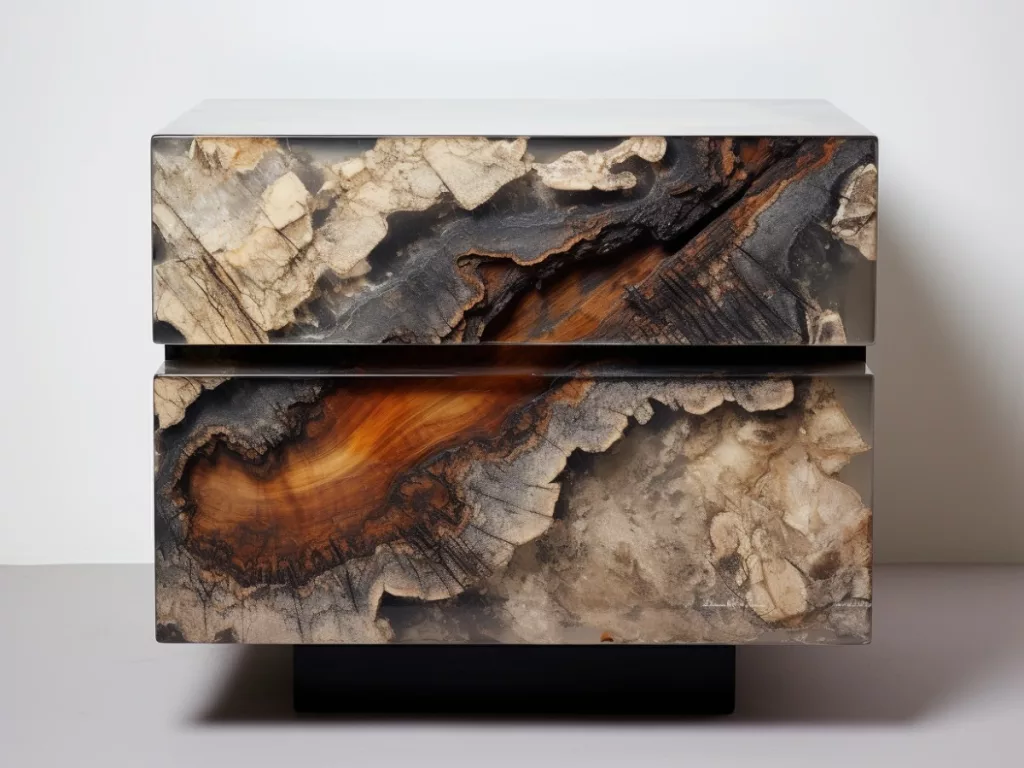
Interior and Exterior Décor
Incorporating petrified wood in interior and exterior décor lends a timeless aesthetic. Its natural hues blend seamlessly with a variety of design themes, while its ancient essence invokes a sense of wonder and connection to the earthly timeline.
Educational and Scientific Significance
Petrified wood is a bridge connecting curious minds to the ancient whispers of Earth’s chronological tale.
Paleontological Insights
The preservation of organic structures in petrified wood opens a window into the paleobotany world, offering a glimpse of vegetation dynamics from bygone eras.
Geological Studies
The mineral composition and radiometric dating of petrified wood help unravel geological events and climatic conditions prevailing during its formation, contributing to a richer understanding of Earth’s historical canvas.
Preservation, Legal Regulations, and Community Engagement
The journey of petrified wood from ancient groves to modern displays necessitates a framework of legal and communal stewardship.
Legal Protections and Regulations
Guarding the legacy embedded in petrified wood requires a legal scaffolding to ensure its preservation and ethical engagement.
Collection and Sale Regulations
Jurisdictions often have stipulations governing the collection, sale, and display of petrified wood to thwart illicit trafficking and ensure its availability for educational and scientific endeavors.
Protected Sites
Protected sites like Petrified Forest National Park serve as sanctuaries for these natural artifacts, providing a controlled environment for their preservation and public appreciation.
Community Awareness and Education
Fostering a collective reverence and understanding for petrified wood aids in its preservation.
Preservation Programs
Community-led programs focus on education and active preservation to safeguard the historical wealth borne by petrified wood.
Educational Initiatives
Engaging the public through educational initiatives elucidates the importance of preserving petrified wood, sowing the seeds of appreciation and awareness.
Restoration and Maintenance Efforts
Preserving the sanctity and integrity of petrified wood displays beckons a dedicated effort.
Site Restoration
Restoration projects aim to revive and maintain the natural settings of petrified wood sites, ensuring they continue to narrate the ancient tales encapsulated within.
Maintenance of Petrified Wood Displays
Maintenance efforts ensure that petrified wood displays remain pristine and accessible, facilitating an enriching encounter with history for generations to come.
Conclusion
Reflecting on the array of properties and the timeless allure of petrified wood, it’s evident that the melding of natural history with modern-day applications offers a rich tapestry of exploration. The encouragement for further exploration, education, and preservation is not merely a call to action but a homage to our deep-seated connection with the natural world, urging a conscientious engagement with the enduring legacies of Earth’s narrative.
You May Also Like
FAQs
What is Petrified Wood?
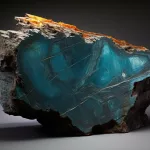
Petrified wood is a type of fossil where the organic materials of the original wood have been replaced by minerals, typically silica, through a process of permineralization, preserving the original structure of the wood.
How is Petrified Wood Formed?
The formation process involves the burial of plant material, often facilitated by natural calamities, followed by mineralization where groundwater saturated with minerals replaces the organic material, turning it into stone over millions of years.
Where Can Petrified Wood Be Found?
Petrified wood can be found worldwide, with notable locations including Petrified Forest National Park in Arizona, Petrified Wood Park in South Dakota, and Lesvos Petrified Forest in Greece.
What are the Properties of Wood Fossil?
It exhibits physical and chemical properties such as hardness, durability, and a unique mineral composition, often resembling the appearance of the original wood.
What are the Uses of Petrified Wood?
Petrified wood has decorative, educational, and scientific uses. It’s utilized in furniture design, architectural décor, jewelry, paleontological studies, geological research, and educational displays.
Is Collecting Petrified Wood Legal?
The legality of collecting petrified wood varies by region and specific location. Some areas have strict regulations to protect geological sites and ensure the preservation of petrified wood.
How Can Petrified Wood Be Distinguished From Regular Wood?
Petrified wood is much harder than regular wood, often resembling stone. It retains the original structure of the wood, but its texture, weight, and appearance can be distinctly different due to mineralization.
What Minerals are Commonly Found in Petrified Wood?
Silica is the most common mineral found in petrified wood, often in the form of quartz. Other minerals like calcite and pyrite may also be present, contributing to the color and texture variations.
How Long Does the Petrification Process Take?
The petrification process can span anywhere from a few thousand to several million years, depending on environmental conditions such as the rate of burial, mineral concentration, and groundwater movement.

